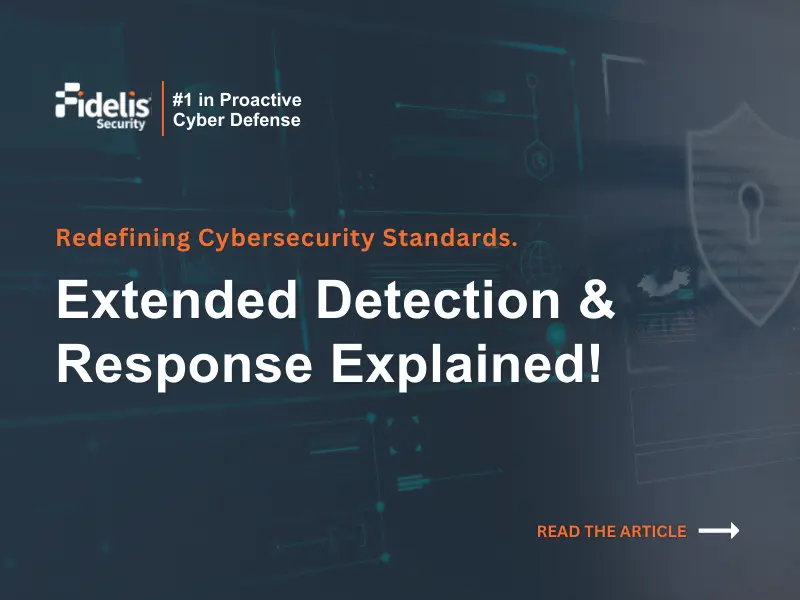Defining Endpoint Detection and Response
Endpoint Detection and Response, or EDR cybersecurity, is a set of technologies designed to monitor, record, and display large sets of data related to activities occurring on endpoint systems. This data is collected in a centralized repository for review and analysis.
Endpoint detection and response is primarily a forensic capability that will monitor for attacks as they occur or allow an analyst to triage post-exploitation activity to determine how a compromise occurred. If an active compromise is discovered, EDR solutions include capabilities to quickly respond and potentially recover from this malicious activity.
Why is Endpoint Detection and Response Important?
The goal of any organization is to prevent compromises before they occur. Unfortunately, with Zero-Day exploits and increasingly sophisticated attacks this is not always a possibility. Therefore, when an environment is compromised it’s crucial to have as much historic context as possible in order to reconstruct the full details of the attack.
In this way, an organization can learn from its past weaknesses to help further enhance its security posture. With a fully deployed endpoint detection and response solution you can actively monitor and quickly respond to advanced threat attacks as they occur while reviewing endpoint activity for previously undetected compromises.
How has Endpoint Detection and Response Evolved?
The adoption of endpoint detection and response had its beginnings as an on-prem technology with a limited set of events recorded from endpoints. Customers were generally required to purchase a dedicated server or series of servers to act as the controller and repository for recorded data.
Endpoint Detection and Response cybersecurity technology is now continuing to evolve with modern architecture with many deployments now including the option to no longer require on-prem controllers. Instead, a new breed of cloud-based collectors is becoming increasingly utilized. These cloud EDR systems allow organizations to monitor their endpoints while both on and off the corporate network and over geographically dispersed areas.
Modern Endpoint Detection and Response (EDR) is also greatly increasing the depth of activity and events collected. This allows analysts greater insight into all aspects of what has occurred on an endpoint when reconstructing an attack timeline.
What are the Key Capabilities to look for in an Endpoint Detection and Response Solution?
There are many important factors to consider when reviewing an endpoint detection and response solution.
First is ease of deployment and maintenance. How quickly can an organization deploy this solution to their endpoints, and can it be done with minimal effort and limited downtime? Ideally, an Endpoint Detection and Response solution should be deployed quickly and painlessly so analysts can begin monitoring for malicious activity.
Is there a limited impact on the performance of the endpoint and network traffic? Endpoint users’ activity should not be hindered by an EDR agent and network traffic should not be greatly impacted.
Next it is important to consider what activity the solution is monitoring and how long the data is available for. Endpoint detection and response technologies should monitor and record a wide range of events occurring on the endpoint. This limits the chances of malicious activity going undetected. Since many advanced attacks also take place over a series of days, weeks, or in some cases months, it is also important for the solutions to retain the data for a long enough period to complete a full reconstruction of the attack timeline.
Finally, what are the response capabilities of the solution? In the event of unwanted activity being discovered, what tools does the analyst have at their disposal to terminate, recover, and prevent this situation from reoccurring?
Benefits of Endpoint Detection and Response Security
Modern cybersecurity solutions must include Endpoint Detection and Response (EDR) Security since it concentrates on detecting and reducing threats that target specific devices within a network. Here are some of the benefits of EDR tools:
- Improved Threat Detection: Network connections, file modifications, process executions, and other endpoint actions are all continuously monitored by EDR solutions. Through real-time analysis of these activities and correlation with established danger indicators or unusual behavior patterns, EDR solutions can identify advanced threats that conventional antivirus software could overlook.
- Faster Incident Response: Security teams can see endpoint activity and any security issues in detail thanks to EDR security solutions. This visibility shortens the time it takes to discover and stop a breach, enabling quicker identification and reaction to cyber threats.
- Enhanced Investigation Capabilities: The extensive forensic capabilities offered by EDR solutions enable security analysts to carry out in-depth investigations of security occurrences. They can identify a problem’s origin, assess the level of compromise, and gather information for corrective and legal requirements.
- Behavioral Analysis: EDR solutions identify and address unknown or zero-day threats by using behavioral analysis techniques. By establishing a baseline of typical behavior patterns and identifying deviations from it, EDR systems can spot suspicious behaviors that may be signs of possible threats.
- Threat Intelligence Integration: Through the integration of multiple EDR cybersecurity systems with threat intelligence feeds, organizations can leverage the latest information on identified threats and indicators of compromise.
- Integration with SIEM and SOAR Platforms: Integrating EDR systems with Security Information and Event Management (SIEM) and Security Orchestration, Automation, and Response (SOAR) platforms increases their effectiveness. It makes it possible for automated response workflows, smooth information exchange, and security process orchestration throughout the security architecture.
For all these benefits and more, choose Fidelis Endpoint®, with active, deep visibility into endpoint activity, Fidelis Endpoint® speeds investigations and gives you hands-on control so you can pinpoint and eradicate threats to your organization.
Limitations of choosing EDR Security
Endpoint Detection and Response, or EDR, has many advantages, but it also has limitations. One limitation is that endpoint monitoring might provide a lot of data and warnings, which could overwhelm security staff. When EDR solutions are not properly tuned and prioritized, they can overwhelm analysts with low-priority or false positive signals, which can cause alert fatigue and reduce incident response efficiency.
Furthermore, since attacks increasingly target various attack vectors beyond endpoints, like networks and cloud environments, EDR solutions’ primary focus on endpoint visibility may create blind spots in the larger security landscape.
XDR: A Comprehensive Security Solution
If an organization wants to get more comprehensive protection, then Extended Detection and Response (XDR) solution may be a better choice with more extensive advanced threat detection and response capabilities. With integrated network, endpoint, and cloud visibility and analysis, XDR platforms automatically maps your cyber terrain and evaluates the risk of every asset and network path.
Fidelis Security’s XDR Platform, Fidelis Elevate®, provides the forensic data and metadata, predictive analysis, and automation tools defenders need to operate inside the adversary’s decision-making cycle. With AI-powered threat detection, analysis and MITRE ATT&CK mappings, your defenders can anticipate attacker movements, respond with confidence, and remediate faster against advanced cyber threats.



